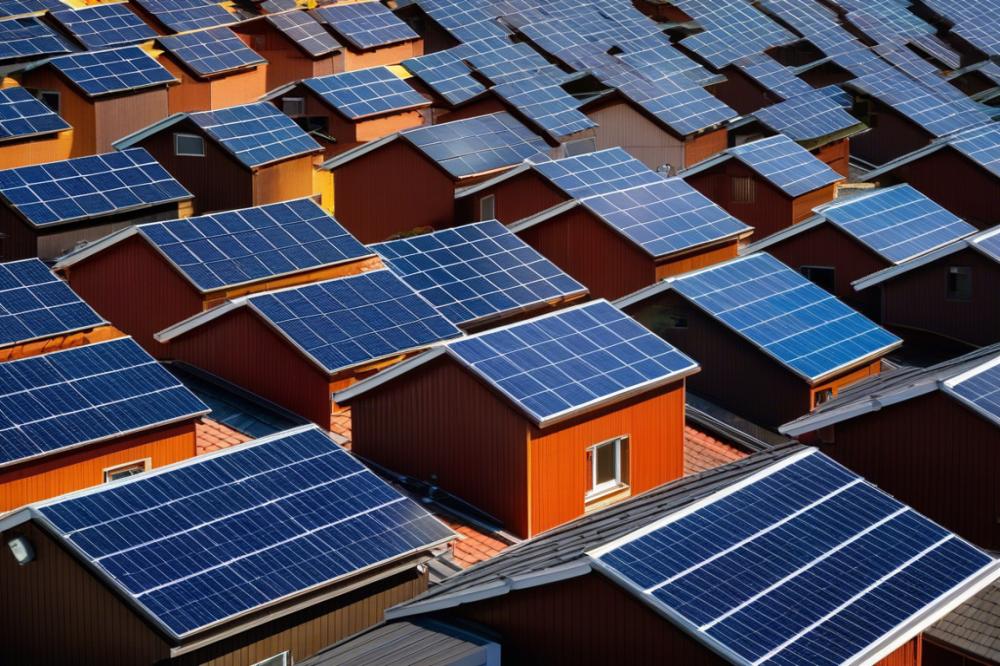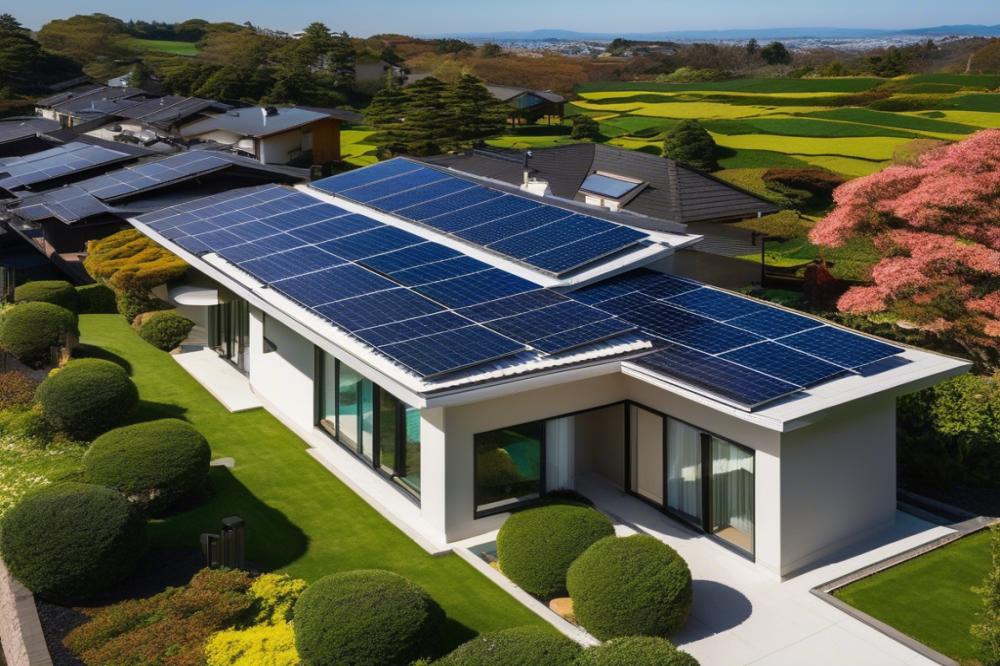Turning Sunlight into Income: Selling Home Solar Electricity in Japan
Overview of Home Solar Electricity in Japan
Solar power has gained significant traction in Japan over the past decade. Many homeowners are now considering solar panels as a viable option. This move aligns with the country’s commitment to renewable energy and sustainability. The Japan Solar Market is evolving, presenting opportunities for citizens to generate their own electricity. With the right setup, families can harness the sun’s energy to power their homes and even earn money through selling electricity back to the grid.
Importance of Renewable Energy for Homeowners
Renewable energy plays a crucial role in today’s energy landscape. Homeowners increasingly recognize the importance of shifting towards sustainable living. With rising concerns about climate change, adopting green technologies has never been more important. By investing in solar panels, individuals can contribute to a larger solution. Energy independence is another significant benefit, allowing families to rely less on outside sources. This independence can shield them from fluctuations in energy prices.
Economic Benefits of selling electricity Generated from Solar Panels
There are many economic advantages linked to generating solar power. Homeowners can enjoy savings on their electricity bills, which is a major draw. Furthermore, selling excess electricity through programs like the feed-in tariff can provide additional income. Japan’s energy policy supports such initiatives, offering solar incentives to encourage investment in green technologies. As the solar market expands, more families see this as a lucrative opportunity. Turning sunlight into cash can create a win-win scenario for both the environment and the homeowner’s finances.
Understanding Home Solar Electricity

Solar panels are devices that convert sunlight into electricity. They are made up of many small units called solar cells. When sunlight hits these cells, it creates an electric current. This process is called the photovoltaic effect. Homeowners can use this electricity for their own needs, or they can sell excess power back to the grid.
There are different types of solar power systems for homes. Grid-tied systems are popular. These connect to the local power grid and allow homeowners to sell electricity. Off-grid systems operate independently and are ideal for rural areas. Hybrid systems combine both methods. Each type serves various needs based on energy usage and location.
Solar power plays a vital role in Japan’s energy policy. The country is focused on increasing renewable energy sources after the Fukushima disaster. Solar energy offers a way to lessen dependence on fossil fuels. Homeowners can take advantage of solar incentives offered by the government. Programs like the feed-in tariff allow individuals to earn money by selling their excess power. This plan supports sustainable living and promotes energy independence.
Japanese citizens are also seeing potential homeowner savings. By using solar energy, families can reduce their electricity bills significantly. Many are motivated not just by savings, but also by the desire to contribute to a cleaner environment. Transitioning to solar reflects a commitment to combating climate change. Each panel installed changes the landscape of energy consumption in Japan.
The Feed-in Tariff System

The feed-in tariff, often called FIT, is a fundamental part of Japan’s energy policy. It allows homeowners to sell excess solar electricity back to the grid. The primary purpose is to encourage renewable energy use and reduce dependence on fossil fuels.
Homeowners benefit noticeably from this system. By installing solar panels, they can produce their own electricity and lower their monthly bills. Any surplus energy can be sold, resulting in extra income. This not only boosts homeowner savings but also promotes energy independence.
Across Japan, feed-in tariffs vary significantly. Different regions may offer different rates for solar power. Some areas have more attractive incentives than others. For example, urban regions may provide higher payments compared to rural locations, reflecting demand differences. Understanding these variations is crucial for potential solar investors.
The FIT has successfully driven solar adoption. Many Japanese households now embrace sustainable living through solar energy. It also highlights a shift toward cleaner energy. Engaging in this can lead to both financial gain and environmental benefits.
Homeowners considering this option should research the specific tariffs in their area. By doing so, they can make informed decisions about investing in solar technology. The future looks bright as more people participate in this transition to renewable energy.
Solar Incentives and Subsidies
Japan has made significant strides in promoting solar energy adoption. The government offers a range of incentives aimed at encouraging homeowners to invest in renewable energy. These programs are designed to make solar power more accessible to the average citizen. Many people see this as a step toward energy independence.
Overview of Government Incentives for Solar Energy Adoption
The Japanese government has implemented various solar incentives to boost the use of solar panels. One key strategy is the feed-in tariff system. This program allows homeowners to sell electricity generated by their solar systems back to the grid at a guaranteed rate. Such policies create a financial boost for those willing to embrace sustainable living. The structure of these tariffs can be quite appealing. They provide a predictable income stream, making solar investments more attractive.
Availability of Subsidies for Solar Panel Installation
Subsidies for solar panel installation are another essential part of Japan’s energy policy. These financial supports can significantly lessen the upfront costs that deter many potential buyers. Often, these subsidies can cover a substantial portion of the installation expenses. Homeowners can take advantage of these offers to enhance their homes with efficient technologies. As renewable energy grows in importance, financial aid from the government continues to increase.
Impact of Incentives on Homeowner Savings and Investment Returns
The consequences of these solar incentives on homeowner savings are notable. By reducing installation costs and facilitating electricity sales, these programs create appealing investment returns. Many homeowners report feeling more secure in their financial situation thanks to these incentives. By harnessing solar power, they not only save money but also contribute positively to the environment. Joining the renewable energy movement is becoming a popular choice across the nation.
Building Energy Independence
Generating power from home solar systems comes with many advantages. First, it reduces reliance on traditional energy sources. Homeowners can harness the sun’s rays to create their own electricity. By installing solar panels, families can become less dependent on grid energy. This leads to greater energy independence, a valuable goal in today’s world.
Japan’s energy policy supports this shift through various solar incentives. When homeowners produce more electricity than they use, they can sell the excess back to the grid. This process, known as selling electricity, can lead to significant financial benefits. Many families see increased homeowner savings, which can help pay off the initial investment in solar power systems more quickly.
Embracing renewable energy is not just smart financially; it also contributes to sustainable living practices. Using solar power means emitting fewer greenhouse gases compared to fossil fuels. As more people invest in solar technology, they are also helping to create a cleaner environment. This change is crucial for the planet’s future, making the effort worthwhile.
Participation in the feed-in tariff program can further enhance these benefits. Homeowners receive a set payment for every kilowatt-hour of solar electricity they produce. Such programs incentivize the adoption of solar technology and support household budgets. With these measures in place, energy independence becomes more attainable for many.
Ultimately, adapting to solar energy empowers consumers. It allows families to take control of their electricity needs. Moreover, it reduces vulnerability to fluctuating energy prices. This stability is particularly important in a nation like Japan, where energy resources can be limited. Homeowners can feel a sense of pride knowing they play a role in crafting a sustainable energy future.
Challenges and Considerations
Regulatory Challenges Faced by Homeowners
Navigating Japan’s regulatory landscape can be tricky for homeowners looking to sell electricity. Local policies differ greatly, and understanding the rules is vital. Japan energy policy has undergone significant changes. These shifts can impact how homeowners take advantage of solar incentives. Moreover, compliance with safety regulations is mandatory. Obtaining the necessary permits may take time, leading to delays in installation. Homeowners should closely monitor updates in legislation. Awareness of these regulations can prevent costly mistakes and misunderstandings later on.
Technical Considerations When Installing Solar Panels
Installing solar panels involves more than just choosing a location. Finding the right setup requires understanding your home’s energy needs. Efficiency of the solar power system depends on sunlight exposure during the year. Proper orientation and angle of the panels affect overall performance, especially in Japan’s diverse climate. Homeowners must also think about maintenance. Solar panels need occasional cleaning and inspection to function well. Connecting the system to the grid is another important step. Working with experienced installers can simplify this process significantly.
Financial Implications of Selling Solar Electricity
Financial aspects pose another layer of complexity. Homeowner savings can come from reduced electricity bills. However, initial costs for installation may be high. Understanding the feed-in tariff system is essential. This program allows homeowners to sell excess electricity back to the grid. The rate can vary, affecting the overall profitability. Long-term returns on investment depend on various factors including market demand and maintenance costs. For many, the journey into renewable energy represents both a financial investment and a commitment to sustainable living. Planning carefully can maximize returns and lead to energy independence in the long run.
Future of Home Solar Electricity in Japan
Trends in the Solar Market and Energy Policy
The solar market in Japan is changing rapidly. More homeowners are looking to install solar panels. This shift is influenced by rising awareness of renewable energy benefits. Government support is also important. Japan’s energy policy encourages solar adoption through various programs. These initiatives help homeowners reduce their electricity bills. They can sell their surplus electricity, creating a new income stream. The increased demand for solar power highlights its growing role in the energy landscape.
Potential Developments in Solar Incentives and Technologies
Japan may see new solar incentives in the near future. Various experts predict improved feed-in tariffs as the technology advances. Better payment structures can make selling electricity more attractive. Homeowners might enjoy more savings as installation costs fall. Innovative solar technologies could increase efficiency. New options may allow homeowners to generate even more energy. These developments promise to enhance overall sustainability. A focus on energy independence will benefit households as well.
Long-term Projections for Homeowners and Renewable Energy
Looking ahead, the future of solar power seems bright in Japan. Homeowners are expected to embrace renewable energy more than before. Long-term projections suggest that the number of solar installations will grow. Many families will switch to sustainable living practices. This shift can lead to reduced reliance on traditional energy sources. Homeowners will likely feel empowered by their energy choices. Greater participation in the solar market does more than provide savings. It fosters a community of environmentally conscious individuals. Each step toward solar energy contributes to a larger goal of sustainability in Japan.
Final Thoughts on Solar Opportunities
Selling home solar electricity offers numerous benefits, especially in Japan’s changing energy landscape. Homeowners can earn extra income while promoting renewable energy. By installing solar panels, families can significantly reduce their electricity bills. This not only helps the wallet but also contributes to a healthier planet. Renewable energy sources like solar power lead to lower carbon emissions, making a positive impact on climate change.
Investing in solar is more accessible than ever. Government incentives and financing options make the transition easier for many. It’s not just about savings; it’s about being part of a larger movement towards sustainability. Homeowners should seriously consider how this technology can improve their lives. Imagine the feeling of generating your own energy!
Support for sustainable energy initiatives in Japan is crucial. As more people embrace solar power, the demand for cleaner energy will grow. Communities that rally behind these efforts foster a brighter future for everyone. So, let’s take action together. Encourage friends and family to explore solar solutions. Every effort counts in making Japan a leader in renewable energy.



